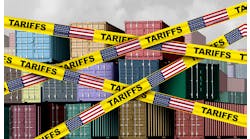Maybe it’s because we just put our December Innovation Awards issue to bed that news of last weekend’s Bangladesh garment factory fire that killed more than 100 workers grabbed my attention. This was a factory that suppliers to Walmart, Sears and other big retailers relied on to produce clothing at bargain basement costs. Rising to the top of the factory’s ash heap are uncomfortable bits of information that should inspire some innovative thinking in retail’s global supply chain.
First of all, we’re learning from various news accounts that there were no fire exits in the building owned by Tazreen Fashions and that exit doors in the eight-story structure were locked. Workers who did make it into the dark, smoke-filled stairway used their cell phones to light their way. This is a great example of innovative thinking by those workers, and it’s a shame their managers never tapped that resource for anything other than cheap labor. If they had, they might have come up with some best practices that would combine worker safety and comfort with productivity and economy.
Unfortunately, from the news reports, it sounds like Tazreen already had a history of fire safety violations and that Walmart decided to stop using it a while back. That didn’t stop one of the retailer’s suppliers from ignoring that censure and continuing to take advantage of those rock-bottom slave wages.
What irks me is how creative many suppliers to the retail industry are at hiding fingerprints—their own and those of their customers—after such tragedies. Although the retailers defend their role by saying they hire monitors to check periodically on safety conditions at these plants, a Wall Street Journal account cited labor rights organizations as pointing out that these monitors actually insulate retailers from direct responsibility. Not only that, but by suppliers constantly shifting work to lower cost factories, the owners of those factories that lose business are given no incentive to spend on safety improvements. That would only raise their costs.
That’s the challenge with global supply chains. The depth of supplier tiers tends to lend manufacturers and retailers some level of deniability—kind of like the political hierarchies in government, where underlings tend to take the bullets for their bosses. But is that kind of set-up innovative or just sophisticated thinking?
Sophisticated is defined as “highly complicated, deprived of native or original simplicity.”
To innovate is to “effect a change in,” or to “do something in a new way.”
I’m uplifted by innovation. I felt refreshed after going through the stories MH&L ran over the course of 2012 to find candidates that best represented the spirit of innovation for our December issue awards coverage. One of our finalists was Lobue Citrus, a family-owned grower that decided to join the industry effort to establish traceability in the food chain. Tom Clark, operations manager at this company, decided to do what many other smaller, family-run businesses shy away from: make a risky investment. It wasn’t the nature of the tracing technology that was risky, it was the timing. He decided that instead of waiting to be forced into compliance by the FDA, he’d take the initiative to work with supply chain partners like CH Robinson, FoodLogiQ, Intermec and Associated Grocers to develop a trace-back/trace-forward method of making the food chain more accountable. By the way, in doing so he also found a way to improve his own company’s inventory record keeping operations, resulting in significant savings. That’s innovation.
But let’s go beyond definitions and look at the formula for innovation. The way I see it, innovation equals intelligence plus wisdom. I have a feeling the industry and legal authorities investigating the aftermath of that garment plant fire in Bangladesh will discover many more sophisticated approaches various entities took to lower labor costs at the expense of worker safety. There will be plenty of intelligent people finding effective ways to point fingers and escape blame. What I’m hoping to hear about are the wise people who take responsibility—not only for the future capital investments of their own companies, but for the intellectual capital of their industry’s global supply chain.


